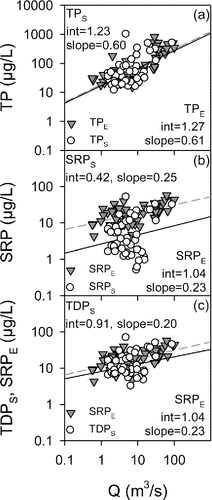Figures & data
Figure 1. Cayuga Lake, the 11 Finger Lakes, and position in New York. Shown are 4 monitored tributaries, USGS gauges, pelagic site, lake source cooling (LSC) discharge, and shelf portion of the lake at its southern end.
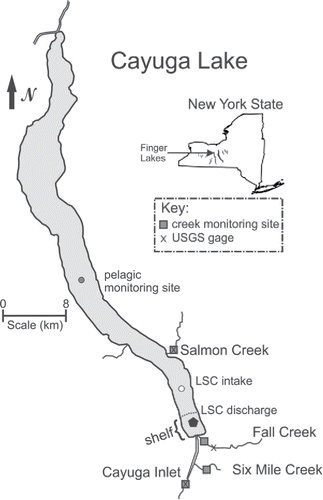
Table 1. Specifications for inputs to Cayuga Lake monitored for forms of phosphorus (P); watershed areas, agricultural land use, samples analyzed according to the 2 protocols, and bioavailable fractions for the P forms as analyzed by the standard methods protocol.
Table 2. Comparison of selected analytical features for 2 methodologies for measurements of the concentration of phosphorus (P).
Figure 2. Time series for the LSC discharge for 3 forms of phosphorus (P) for 2013, according to 2 analytical protocols, standard methods (S) protocol (subscript S), and EPA protocol (subscript E): (a) TP, (b) TDP, and (c) SRP.
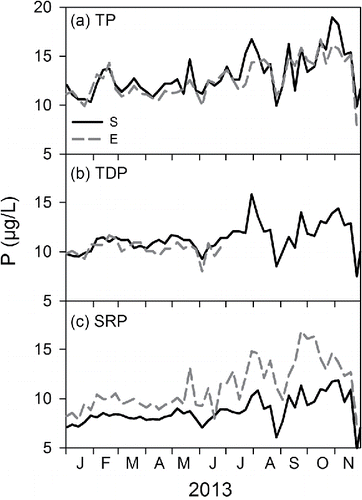
Figure 3. Representations of extent of closure of forms of P in the LSC discharge from split samples for the S and E protocols as distributions of ratio values: (a) TP, (b) TDP, (c) PP, (d) SRP, (e) SUP, and (f) the ratio SRPE:TDPS.
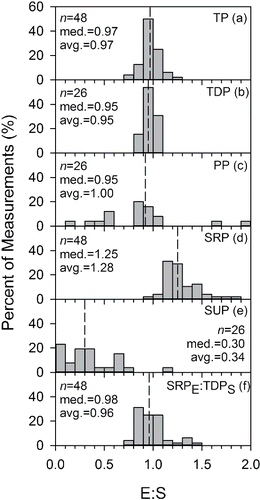
Figure 4. Lake P patterns and (a) time series of monthly average TDPS, SRPS, and SUPS in the upper waters of Cayuga Lake for the April-October 1999–2006 interval and 2013; vertical bar corresponds to ±1 standard deviation, (b) comparison of TDP, SUP, and SRP concentrations in early April (during turnover) 2013 for deep wake Water and from the S and E protocols and upper lake water from S protocol.
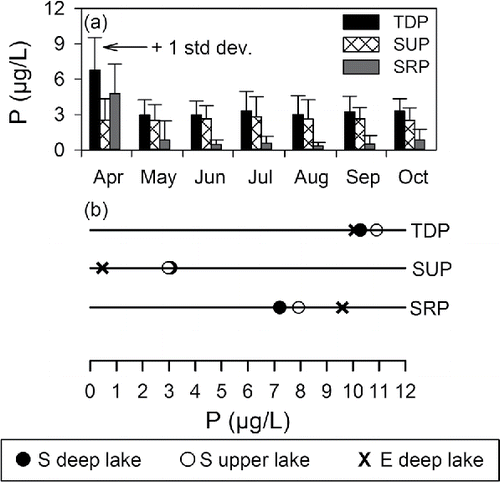
Figure 5. Phosphorus (P) concentration versus stream flow (Q) relationships for Fall Creek that compare results from the 2 analytical protocols: (a) dependencies of TPS and TPE on Q, (b) dependencies of SRPS and SRPE on Q, and (c) dependencies of TDPS and SRPE on Q.
